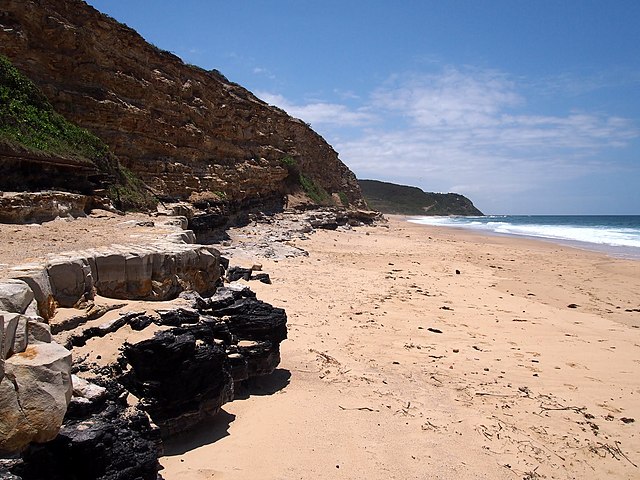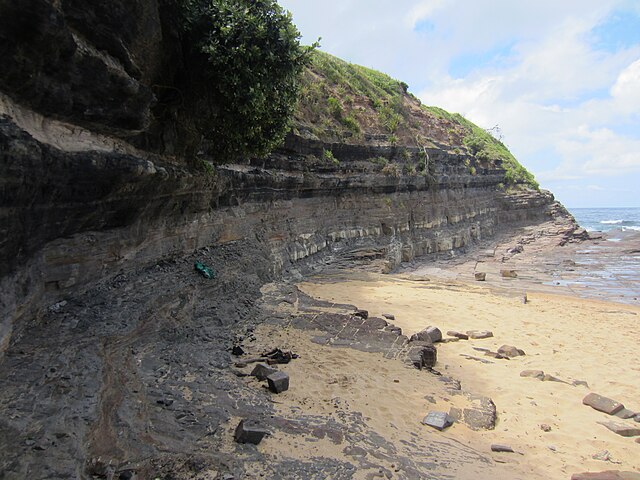Coastal coal-carrying trade of New South Wales
The coastal coal-carrying trade of New South Wales involved the shipping of coal—mainly for local consumption but also for export or coal bunkering—by sea to Sydney from the northern and southern coal fields of New South Wales. It took place in the 19th and 20th centuries. It should not be confused with the export coal trade, which still exists today. There was also an interstate trade, carrying coal and coke to other Australian states that did not have local sources of black coal.
Loading coal at "the Dyke", Carrington, c. 1900
Coal seam outcrop, Glenrock State Conservation Reserve, near where coal was first used by escaped convicts in 1791
Coal seam outcrop at Bell's Point, at the northern end of Austinmer Beach. This is the coal seam noted by George Bass in 1797.
A sixty-miler enters Newcastle Harbour in 1923
Sixty-miler (60-miler) is the colloquial name for the ships that were used in the coastal coal trade of New South Wales, Australia. The sixty-milers delivered coal to Sydney from ports and ocean jetties to the north and south. The name refers to the approximate distance by sea; the distance, from the Hunter River mouth at Nobbys Head to the North Head of Sydney Harbour, is 64 nautical miles.
A sixty-miler entering Newcastle under ballast in 1923
Coal Wharf - AGL Gasworks at Mortlake on the Parramatta River with a sixty-miler alongside
Beulah unloading coal at Balls Head Coal Loader, in 1930. Note the 'W' on her funnel
Half of her crew; the survivors of Annie M. Miller, photographed when they landed at Watsons Bay, four hours after she sank, February 1929.







